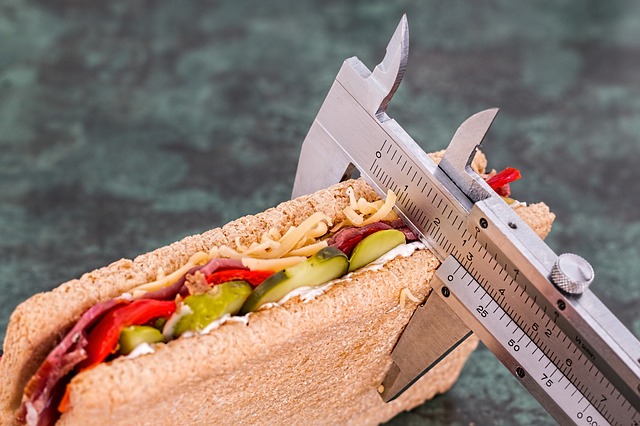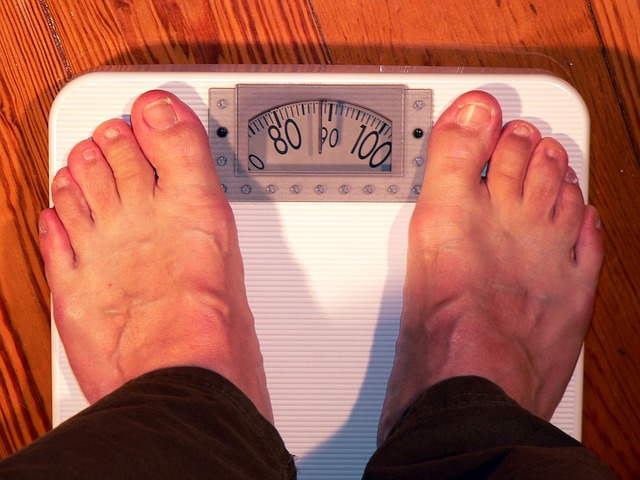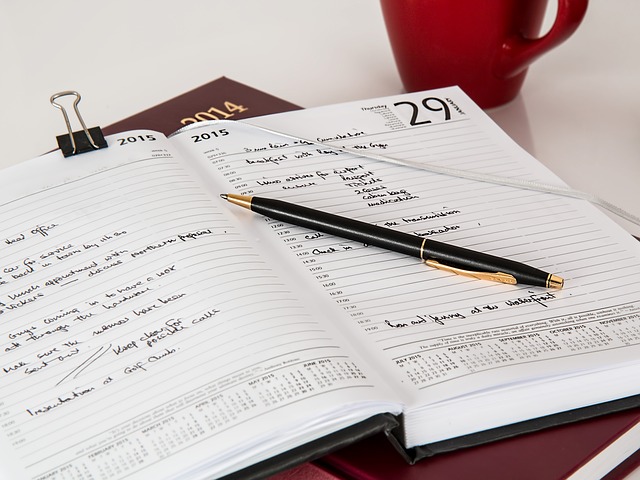I probably shouldn’t have been surprised. Get a couple thousand people in a room and at least half will say they’d like to lose some weight.
Get a couple thousand hard charging Type A personalities in a room and many will say they’d like to lose a little weight fast.
Makes sense. How you feel, and how you feel about yourself, can play a big role in your professional life: the better you feel and feel about yourself the more confident you are… and if you’re like me, feeling confident affects almost everything you do.
So when an audience submitted questions and then voted on the one they most wanted me to address, here’s the one they chose:
“How can I lose 10 pounds in one month?”
While I was surprised, I answered the question — and if like them you want to lose some weight relatively quickly, here’s how.
But before we start: I’m not a nutritionist. I’m not a certified exercise professional. I have no credentials. So take all this with a huge grain of salt, consult your physician before starting any diet or exercise program… you know the drill.
I’m not any of those things but I do like to take on unusual physical challenges. I once completed a 92-mile, 4-mountain gran fondo after four months of training. (The next year I rode the same event five months after having a heart attack.)
Then I got tired of being “cycling skinny,” decided to see if I could pull off one of those “actor transforms himself for an action hero role” things, and gained 22 pounds while decreasing my body fat by a couple of percentage points. (While far from becoming an action hero — especially since action heroes don’t have bad haircuts, big noses, and southern nasal accents — I did put on a surprising amount of muscle.)
And I’ve done the following too. Just for fun (I know my idea of “fun” is a little odd) I went from 172 to 161 pounds. If I can lose the weight, you probably can too… as long as you want to lose the weight, because while it’s simple, it isn’t easy. (Is accomplishing anything worthwhile ever easy?)
First let’s start with two overriding premises:
1. Commit to the process, not the goal.
You’ll lose weight by following a process and not by focusing solely on the goal. (For more on the critical difference between process and goals, check this out.)
Process is everything. If you can’t commit to the process you won’t lose weight. So commit, truly commit, to sticking with it for 30 days. (You can do almost anything for 30 days — shoot, you probably stuck with a job you hated for years.)
2. Embrace the power of “I don’t.”
When you want to change a behavior, using the phrase “I don’t” is up to eight times more effective than saying “I can’t.” It’s more than twice as effective as a simple “no.”
The Journal of Consumer Research ran a number of studies on this difference in terminology. One of the studies split participants into three groups:
- Group 1 was told that anytime they felt tempted to lapse on their goals, they should “just say no.” This group was the control group, because they were given no specific strategy.
- Group 2 was told that anytime they felt tempted to lapse on their goals, they should implement the “can’t” strategy. For example, “I can’t miss my workout today.”
- Group 3 was told that anytime they felt tempted to lapse on their goals, they should implement the “don’t” strategy. For example, “I don’t miss workouts.”
The results?
- Group 1 (the “just say no” group) had 3 out of 10 members stick with their goals for the entire 10 days.
- Group 2 (the “can’t” group) had 1 out of 10 members stick with her goal for the entire 10 days.
- Group 3 (the “don’t” group) had an incredible 8 out of 10 members stick with their goals for the entire 10 days.
So embrace the power of “I don’t.” When you’re tempted to miss a workout, say to yourself, “I don’t miss workouts.” When you’re tempted to eat a bowl of ice cream, say, “I don’t eat ice cream.” “Don’t” is non-negotiable; “can’t” implies you have a choice — and making the right choice, time after time, is really hard.
Always think in terms of “I don’t.”
Now on to the specifics …
1. Figure out what you currently eat.
Take a couple days and log everything you eat. Total up the calories. Don’t be tempted to eat less or eat more… just do your normal thing. What you currently eat makes you weigh what you currently weight; the key is to establish a working baseline of calories so you’ll know where to go from where you are.
Once you have that, you’re ready to get started.
2. Start with a fast day.
I’m not a fast/cleanse kinda guy, but drinking clear liquids only for 24 hours is a great way to hit the reset button on your normal habits. (I didn’t use a cleanse/flush product; whether you do is up to you.)
Plus many people claim an occasional fast is good for you. But best of all your stomach will naturally shrink and when you do start eating again you’ll feel full faster — and therefore will eat less.
Just stop eating at, oh, 8 p.m. tonight, only drink clear liquids tomorrow, and start back up with a healthy breakfast the following day. (I know that’s more than 24 hours. But why are you eating after 8 p.m. anyway?)
Think you can’t go a day without eating? You can. It’s not that hard.
And you’ll probably lose close to a pound in the process, which will get you off to a nice feedback loop start.
3. Exercise first thing every morning.
But not long: 20 minutes of moderate cardio is enough. You’ll get your day off to a great start, you’ll be less likely to overeat later (since you’ll know that means you wasted some of the effort you put in), and you’ll be in a much better mood all day.
4. Eat four or five almonds 15 minutes before every meal.
I’m sure there’s science behind this, but here’s what I know: I’m always less hungry and therefore eat less when I have four or five almonds 15 minutes before a meal.
Plus a little healthy fat is good for all of us.
5. Drink a glass of water just before every meal.
One, drinking more water is good for you. Two, you’ll partly fill your stomach and will feel full faster. We tend to eat for taste, which means we eat past the point of feeling full — and that’s one reason we put on weight.
And that’s why, for the next 30 days, you will…
6. Always stop eating when you start to feel full.
Always.
In a few days your stomach will adapt to the new reality, the hunger pangs you felt early on will fade… and you’ll reset your perception of “full.”
7. Don’t eat anything white.
White flours and white sugars are the enemy. That means foods like white breads, cookies, white pasta, white rice, and white potatoes are out. (The same is true for “white fats” like butter and full-fat cheese.)
Then just replace the white stuff with vegetables, fruits, and lean proteins.
You’ll lose a couple pounds (at least) just from taking this one step. Science says so.
8. Make sure every meal is healthy.
Easier said than done, right? Nope. Easily done. Just include a serving of lean protein (fish, poultry, egg whites, etc.) with two servings of vegetables or one serving of vegetables and one serving of fruit.
Don’t make it complicated. You already know the foods you should and shouldn’t eat. And if you’re smart about it you’ll be able to eat a lot more food than you think. Leave out the dressing and cheese and a big salad involves a lot less calories. Grill a chicken breast, eat tuna without all the mayo… eat more natural foods and less process foods and you’ll be surprised by the difference in calories.
Of course making every meal healthy will require a little planning, so map out what you’ll eat for the next few days and buy and even prepare it ahead of time if you can. Then when it’s time to eat you won’t have to make any decisions about what to eat — you’ll just eat what’s good for you.
Remember, decisions are diet killers. Eliminate as many decisions as possible.
9. Toss in a snack.
Eating less at every meal — and eliminating white foods — will leave you hungry at odd times of the day. I ate a protein bar for a mid-afternoon snack: simple, convenient, and easy to eat on the go.
Remember, snacking with a purpose is smart. Snacking just to snack is not.
10. Burn about 500 extra calories a day.
Note I said “extra.” If you already work out then those calories are already factored into your daily routine and result in your current weight. So you’ll need to burn morecalories.
How? That’s up to you. But keep in mind that unless you’re a high intensity workout fool you’ll need to work out for at least an hour to burn that many calories. Walking at a brisk 3.5 mph only burns, depending on your weight, between 300 and 400 calories an hour.
Cycling is my favorite exercise for burning calories: if I average between 16 and 18 mph (a little slow, I know, but I live in an area with plenty of long hills and small but challenging mountains) I can easily burn 700 to 800 calories an hour.
What you do is up to you — but you need to do it. Burning an extra 500 calories a day — as long as you don’t increase your calorie intake — will knock off about 4 pounds by the end of the month. And you’ll be less likely to overeat because you won’t want to spoil the hard work you put in.
There are plenty of exercise calculators you can use. Pick one, pick some activities, and get to work.
11. Cheat wisely.
Like sweets? Me too. But sweets are about the taste, and taste can be quickly satisfied. I let 3 or 4 chocolate chips melt in my mouth, one at a time, after some of my meals. Or I suck on a couple of chocolate covered pomegranates. (Don’t chew them, though — make them last.)
The calories are negligible but the taste is nice… and will make you feel a little less like a food monk.
12. Weigh every day.
Many experts say not to step on the scales too frequently. That’s awesome if you’re on a long-term diet, but in this case regular feedback is important. (You check your sales figures every day, right?)
Weigh yourself at the same time every day so you eliminate that variable. (I weighed myself as soon as I got out of bed.) While you probably won’t lose weight every day you should notice a downward trend, and if you don’t you need to adjust accordingly. Look back on what you’ve eaten and how you’ve exercised and determine where you’ve gone wrong.
If you’re honest with yourself the mistakes will be easy to spot, especially when you…
13. Keep a food and exercise journal.
The Hawthorne effect works. When we are being observed we change our behaviors … just in this case, you’ll be the one doing the observing.
Plus writing down everything you eat will keep you from any “mindless” eating and will keep you from underestimating — because we all underestimate — what you actually consume.
So write everything you eat down. Then total up your calories at the end of the day. Ideally, you’ll eat 400 to 500 fewer calories than you did before you started, and at the end of the month that will be worth 4 pounds or so.
Then write down your exercise and total up the calories. Make sure you hit your goal every day — don’t assume you’ll catch up somewhere down the road. (You won’t.)
Stay on track, stick to the routine, and trust the process — and trust yourself, because you can trust yourself.
(Quick note: this plan will result in relatively rapid weight loss. If you want to lose, say, 40 pounds, don’t assume you can just do this routine for four or five months; not only is that impractical, it’s probably not good for you. So think of this as a kick-start program. Once the first month is over, transition to a more sustainable program that lets you lose, say, about a pound a week.
And once again… consult your physician before starting any diet or weight loss program.)
Tell me how it works for you!
To receive similar content, “Like” us on Facebook @ https://www.facebook.com/niagarabuzz.ca
















